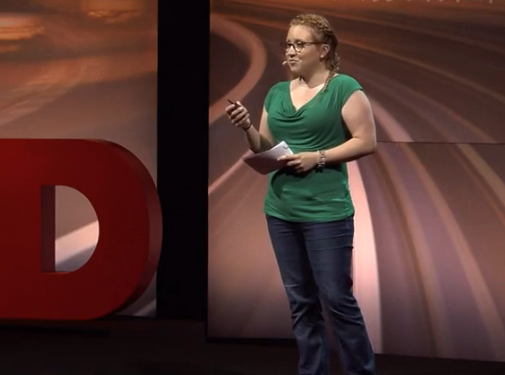So, digging more deeply into this,
因此,深入挖掘這一點,
a few years ago I began working on helping computers to generate human-like stories from sequences of images.
我幾年前開始致力于從圖像序列幫助電腦產生類似人類的故事。
So, one day, I was working with my computer to ask it what it thought about a trip to Australia.
所以,有一天,我正在用電腦工作時,詢問它對澳大利亞之行的看法。
It took a look at the pictures, and it saw a koala.
它看了看圖片,看到一只樹袋熊。
It didn't know what the koala was, but it said it thought it was an interesting-looking creature.
它不知道樹袋熊是什么,但電腦表示它認為樹袋熊看起來是很有趣的生物。
Then I shared with it a sequence of images about a house burning down.
然后我與電腦分享一系列關于房屋燒毀的圖像。
It took a look at the images and it said, "This is an amazing view! This is spectacular!"
電腦看了一下圖片說:“這是個驚人的景觀!這很壯觀!”

It sent chills down my spine.
它使我的脊背發冷。
It saw a horrible, life-changing and life-destroying event and thought it was something positive.
電腦看到一個可怕的、改變生活和毀滅生命的事件,并認為這是積極的事情。
I realized that it recognized the contrast, the reds, the yellows, and thought it was something worth remarking on positively.
我意識到電腦認識到紅色和黃色的對比,并認為這是值得積極評價的事情。
And part of why it was doing this was because most of the images I had given it were positive images.
部分原因是因為我輸入電腦的大部分是積極的圖像。
That's because people tend to share positive images when they talk about their experiences.
那是因為人們談論自己的經歷時,傾向于分享積極的圖像。
When was the last time you saw a selfie at a funeral?
你上次在葬禮上看到自拍照是什么時候?











